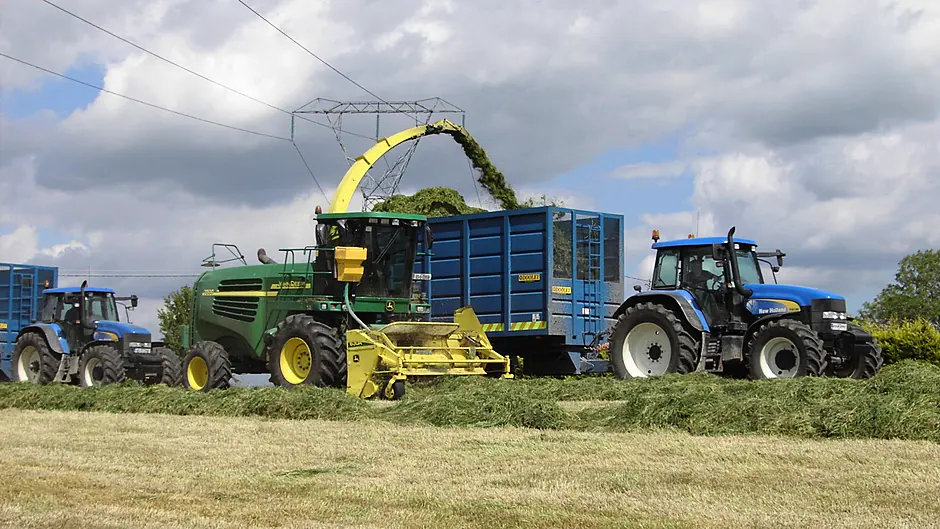
Launched in 2003, the 7000 series harvester took over the reins of the tried and tested 50 series and initially comprised four models- 7200, 7300, 7400 and 7500.
In 2003, the 7700 and 7800 joined the fray boasting wider internals, as well as more horsepower on the 7800 for increased output.
For many, these harvesters were long-awaited as the design of the 50 series had reached its peak.
Manufactured at the Zweibrucken plant in West Germany, dedicated to forage and combine harvester production, the 7000 series at a glance looks similar to the 50 series.
However, there are many substantial differences under the skin which made these harvesters finely tuned machine.
Appearance-wise, the harvester takes on a sleeker design than its box cut predecessor. Both side panels and rear panel lift skyward on gas struts for ease of access for inspection and servicing.
At the rear, the previous use of a viscous fan made way for a hydraulic fan, with a brush and hoover system for keeping the rotatory screen dust free.
Power comes from John Deere’s PowerTech H6125 12.5 litre engine producing 570hp on the 7500.
Keeping this thirsty harvester fed is an 1100 litre diesel tank and the engine provides a distinctive drone that can be heard for miles.
This power is transmitted via a 90-degree gearbox to a seven grove V-belt which drives the cutting unit and blower.
Initial models were fitted with 3m wide 630A header with compressor plate, which was later ungraded to the 630B which had a crop roller.
The silage is fed up to four feed rollers then through the 66cm wide chopping cylinder.
The most notable improvement was the IVLOC (Infinitely Variable Length-of-cut) system which provided on the move changes of crop length.
Knife sharpening could also now be completely controlled from the cab as well as head speed.
A Carraro hydrostatic 4wd rear axle could be fitted as an option however a 40km road speed did nnot become available until later ProDrive models were realeased towards the end of production in 2007.
The cab of the 7000 series boasted great levels of comfort and visibility. Inherited from the STS range of John Deere combines the side console was newly designed with the armrest integrated and travelling with the seat suspension.
The pillar to the right of the operator gives a more comprehensive readout now with three independent displays.
A considerate touch was the illumination of steps at night as well as a wiper mounted on the door.
• Contact Peter at [email protected] or see Instagram@flashphotoscork









